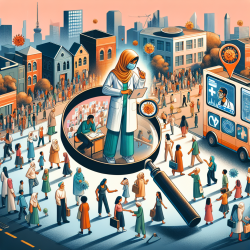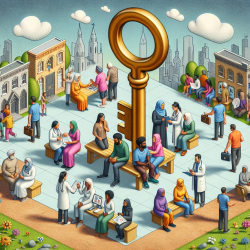Understanding the Flu in Urban Spaces: What Practitioners Need to Know
As a practitioner in the field of health or education, understanding the dynamics of influenza transmission in urban spaces is crucial. The recent study titled Who Gets the Flu? Individualized Validation of Influenza-like Illness in Urban Spaces offers significant insights that can enhance your practice. This blog will explore the key findings of the study and how you can apply them to improve health outcomes in your community.
Key Findings of the Study
The study focuses on the validation of influenza-like illness (ILI) symptoms at the individual level, using data from urban spaces. It identifies four main sets of transmission-driving factors:
- Home-Work Space: The interactions within homes and workplaces significantly influence the spread of influenza.
- Service Space: Places like supermarkets and healthcare facilities are dynamic environments where infections can easily spread.
- Ambient Environment: Factors like temperature and air quality play a role in the prevalence of ILI symptoms.
- Demographics: Age, gender, and household size also contribute to transmission dynamics.
The study's validation accuracy ranges from 73.2% to 95.1%, highlighting the effectiveness of these factors in predicting health outcomes.
Implications for Practitioners
For practitioners, these findings underscore the importance of considering multiple environmental and demographic factors when assessing health risks. Here are some actionable steps you can take:
- Enhance Surveillance: Use data from various urban spaces to monitor ILI symptoms and predict potential outbreaks.
- Implement Targeted Interventions: Focus on high-risk areas like workplaces and service spaces to reduce transmission.
- Educate Communities: Raise awareness about the impact of environmental factors on health and encourage protective behaviors.
Encouraging Further Research
The study's findings open avenues for further research, particularly in validating health outcomes at the individual level. Practitioners are encouraged to explore these areas:
- Investigate the compound effects of transmission-driving factors in different urban settings.
- Develop fine-scaled models to enhance prediction accuracy.
- Collaborate with researchers to gather more individualized health data.
To read the original research paper, please follow this link: Who Gets the Flu? Individualized Validation of Influenza-like Illness in Urban Spaces.










